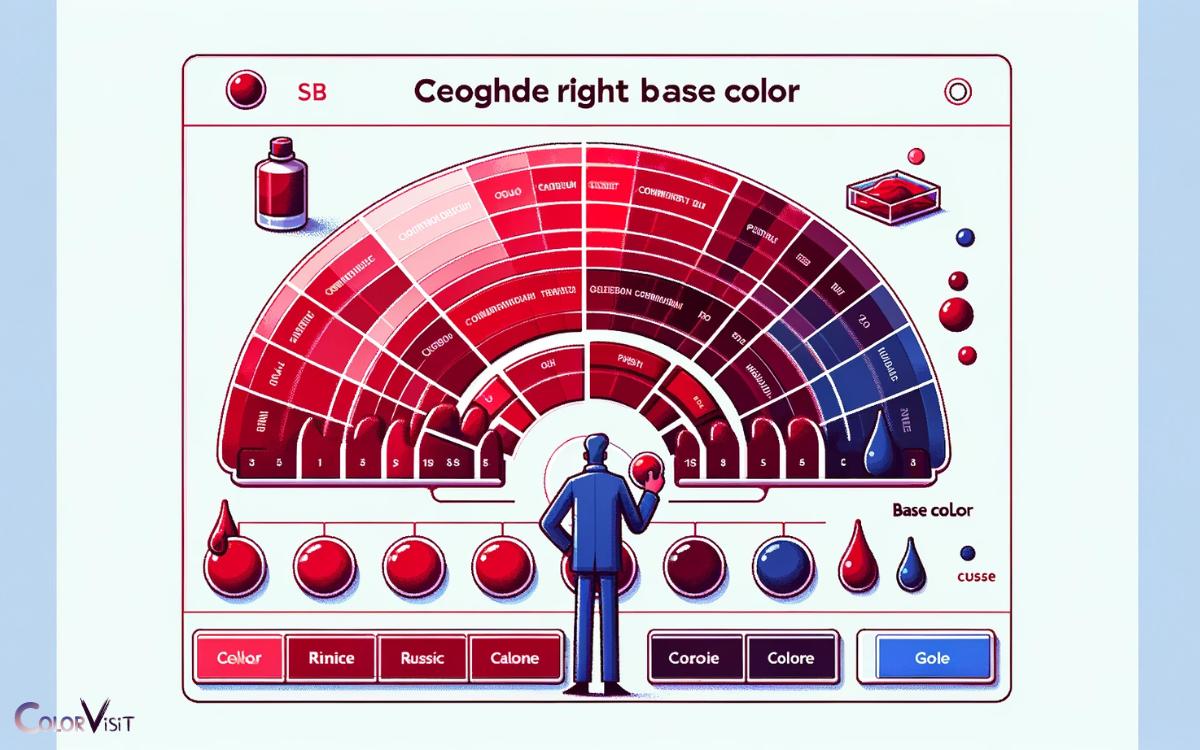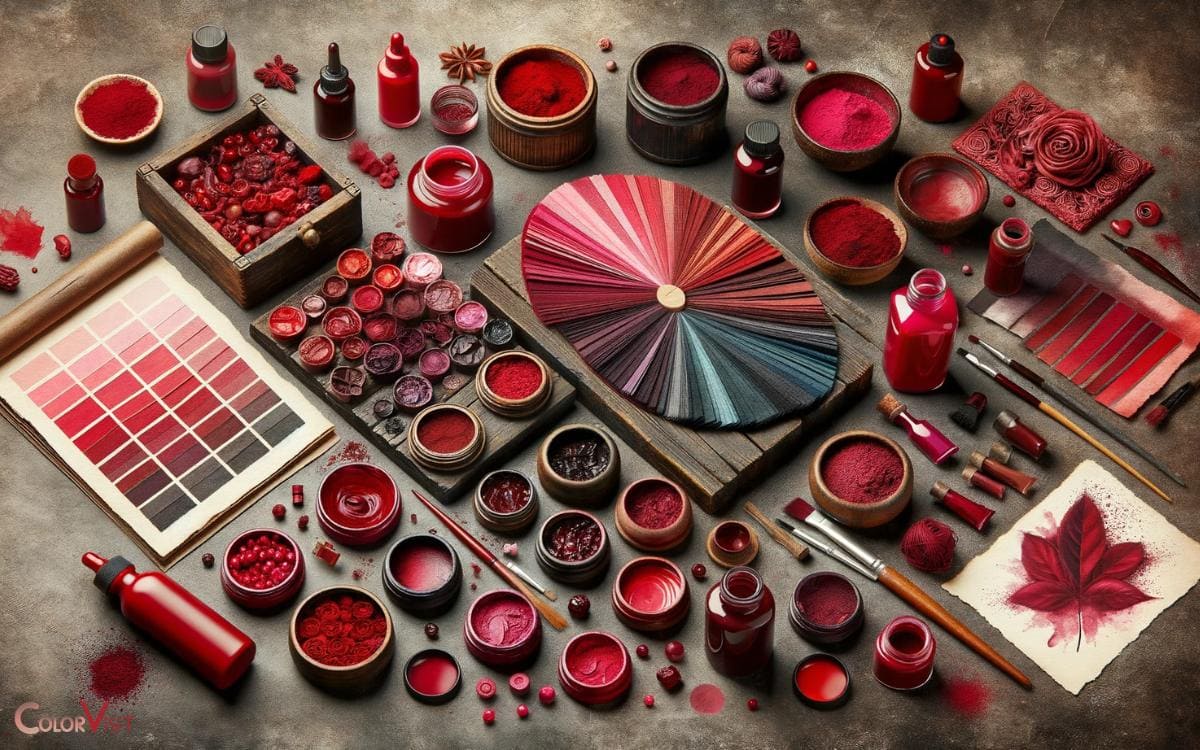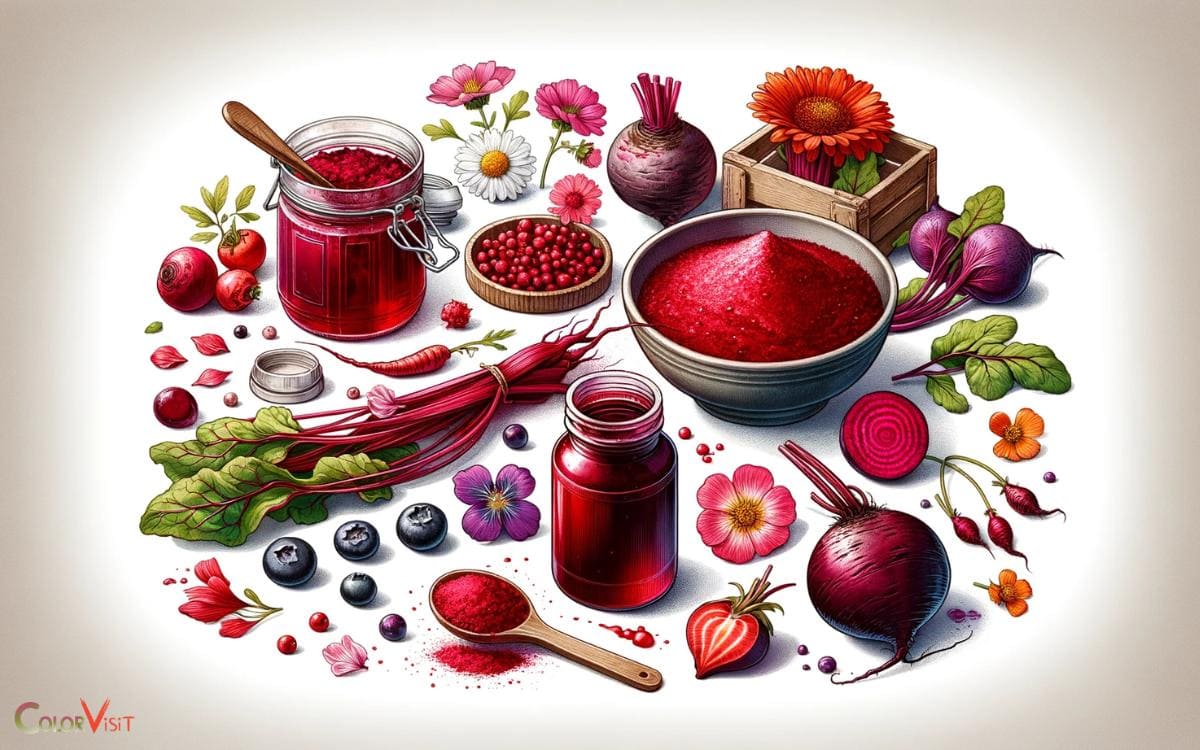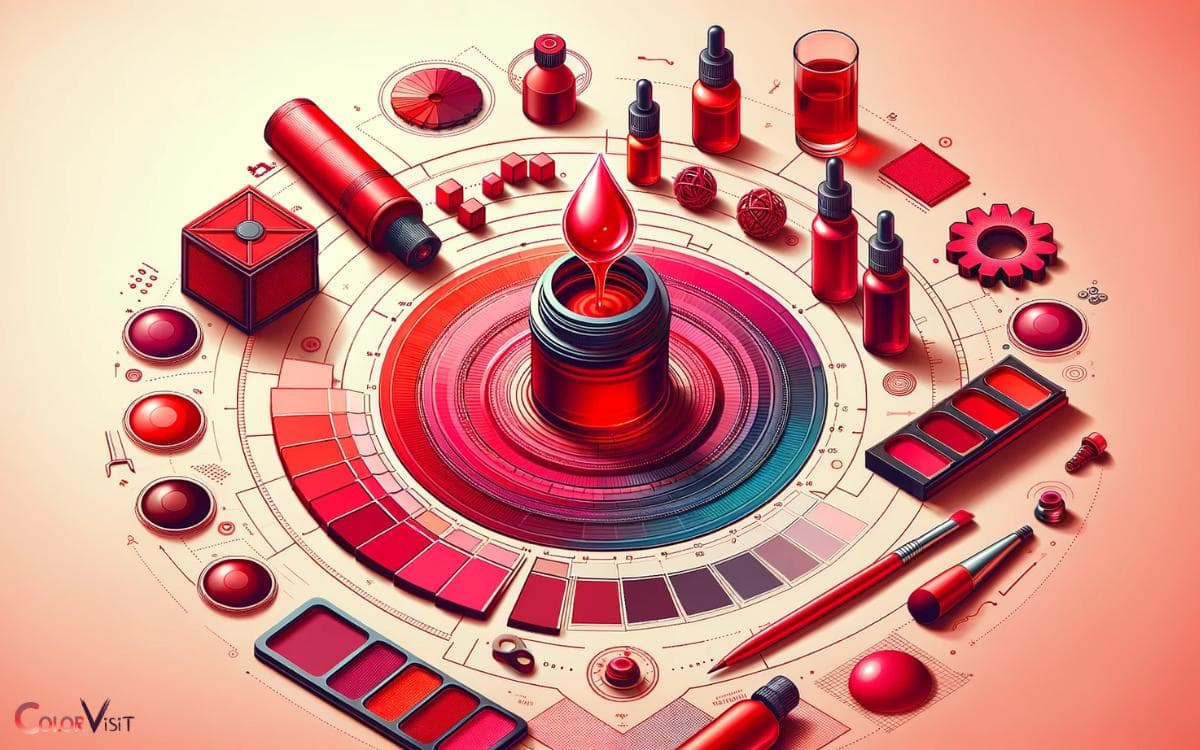How to Get Crimson Red Color? 5 Steps!
Achieving the captivating shade of crimson red involves a combination of precise color mixing and an understanding of color theory.
Here’s a brief example:
Master the artistry of color by learning to mix the perfect crimson red, a must-have shade for any painter’s palette that brings warmth and intensity to artwork.
Key Takeaway
Step 01: Understanding the Color Theory
To achieve the desired crimson red color, it is essential to comprehend the underlying principles of color theory.
- Understanding the color wheel, specifically the relationship between primary colors and their complementary counterparts, is crucial.
- Crimson red is a tertiary color, created by mixing a primary color (red) with a secondary color (violet).
- This knowledge allows for the precise blending of pigments or the accurate selection of digital color codes.
- Furthermore, understanding the effects of light and pigment on color perception enables the creation of vibrant and dynamic crimson red hues.
Step 2: Selecting the Right Base Color
When selecting the right base color for achieving a crimson red shade, it is essential to consider the impact of the base color on the final result.
Understanding the tone and undertone of the base color is crucial in achieving the desired crimson red hue.
This discussion will also revisit the basics of color theory to provide a comprehensive understanding of how the base color influences the final outcome.
Base Color Impact
The selection of the appropriate base color is crucial in achieving the desired crimson red hue.
When choosing a base color for crimson red, consider the following factors:
- Undertones: Opt for a base color with cool undertones, such as a deep burgundy or maroon, to enhance the richness of the crimson red hue.
- Cool undertones: Deep reds with blue undertones can contribute to a more vibrant and intense crimson red shade.
- Avoid warm undertones: Base colors with warm undertones, like orange-reds, may lead to a more orange-leaning red rather than a true crimson.
Tone and Undertone
Selecting the appropriate base color involves considering the tone and undertone to achieve the desired crimson red hue.
The tone refers to the lightness or darkness of the color, while the undertone is the underlying hue that becomes more apparent when mixed with other colors.
To evoke emotion and achieve innovation in your crimson red color, it’s crucial to select a base color with the right undertone.
Below is a table to illustrate the impact of different base colors and their undertones on the final crimson red shade:
| Base Color | Undertone | Resulting Crimson Red Color |
|---|---|---|
| White | Cool blue | Bright, vibrant crimson |
| Yellow | Warm orange | Rich, fiery crimson |
| Gray | Neutral | Deep, sophisticated crimson |
| Black | Cool purple | Intense, dramatic crimson |
Understanding these undertones is essential for creating the perfect crimson red hue.
Color Theory Basics
To achieve the perfect crimson red hue, a thorough understanding of color theory basics is essential for selecting the right base color.
When choosing the base color for crimson red, consider the following:
Hue Selection:
- Start with a primary color like cadmium red for a vibrant base.
- Adjust the hue by adding a touch of blue or violet to deepen the tone.
Undertone Consideration:
- Take into account the undertones in the base color, such as warm or cool undertones, to complement the desired crimson red shade.
Understanding the fundamental principles of color theory and how colors interact will ensure the selection of the right base color for achieving the desired crimson red color with innovation and precision.
Step 3: Mixing Techniques for Crimson Red
When achieving the crimson red color, mastering the mixing techniques is essential for obtaining the desired hue. Innovating in color mixing can lead to unique and vibrant shades of crimson red.
Here are some advanced mixing techniques to help you achieve the perfect crimson red:
| Primary Color | Secondary Color | Tertiary Color |
|---|---|---|
| Cadmium Red | Alizarin Crimson | Vermilion |
| Quinacridone Red | Scarlet | Carmine |
Step 4: Exploring Different Pigments and Dyes
Let’s now turn our attention to exploring different pigments and dyes in order to understand the nuances of color creation.
By distinguishing between pigments and dyes and delving into color mixing techniques, we can gain a deeper understanding of how to achieve a rich crimson red hue. Additionally, exploring the relationships between primary and secondary colors can reveal the nuances that contribute to darker shades. For those looking to understand how to create dark red, mixing in small amounts of black or dark blue can intensify the depth of the color. Experimenting with different ratios will allow for greater control over the final outcome, resulting in a more tailored hue. Exploring the relationship between primary colors and their secondary counterparts allows artists to manipulate various combinations for desired effects. For instance, by blending certain pigments, one can learn how to create red violet, a captivating shade that balances warmth and coolness. This knowledge not only enhances our palette but also enriches our overall artistic expression. Exploring the properties of various pigments reveals the importance of their saturation and transparency in creating vibrant colors. Additionally, experimenting with color combinations can guide us on how to achieve red orange color, enhancing the visual spectrum of our artwork. Understanding the relationships between primary, secondary, and tertiary colors further enriches our ability to manipulate hues effectively. Additionally, exploring the role of primary colors in color theory is essential, as it provides insight into the necessary combinations for achieving various shades. Moreover, knowing how to create black color is crucial for artists seeking to enhance the depth and vibrancy of their work. Ultimately, understanding these concepts allows for more intentional and expressive use of color in any artistic endeavor.
Color Mixing Techniques
Exploring different pigments and dyes is essential for achieving precise crimson red hues, requiring a keen understanding of their properties and interactions.
By experimenting with various pigments and dyes, it is possible to create unique shades of crimson red through color mixing techniques.
The table below provides an overview of different pigments and dyes commonly used in creating crimson red color:
| Type | Pigment/Dye | Color Outcome |
|---|---|---|
| Synthetic | Cadmium Red | Vibrant Red |
| Natural | Madder | Rich Crimson |
| Organic | Alizarin Crimson | Deep Red |
| Synthetic | Quinacridone | Intense Scarlet |
Understanding the properties and color outcomes of these pigments and dyes is crucial for artists, designers, and manufacturers seeking to innovate and achieve the perfect crimson red for their specific applications.
Step 5: Utilizing Natural Ingredients for Red Dye
Utilizing natural ingredients for red dye offers a sustainable and innovative approach to color creation.
To achieve this, consider the following:
- Primary sources of natural red dyes:
- Madder root
- Cochineal insects
These natural sources contain pigments that can be extracted and used to create a range of red hues.
Additionally, the use of natural mordants and pH modifiers can further enhance the color intensity and stability of the dye.
Embracing natural ingredients not only provides a more eco-friendly alternative but also opens up opportunities for experimentation and creativity in the dyeing process.
Tips for Achieving Consistent Results
Utilizing natural dyes such as madder root and cochineal insects can contribute to achieving consistent results in dyeing processes, particularly when coupled with proper mordants and pH modifiers.
- To ensure consistent and vibrant crimson red color, it is essential to maintain precise control over factors such as temperature, duration of dyeing, and the quality of water used.
- Using standardized measurements for the amount of dye material, mordants, and pH modifiers in relation to the weight of the fabric or yarn can also significantly enhance the consistency of the dyeing results.
- Additionally, regular testing and adjustment of dye bath conditions based on the specific requirements of the natural dye used can help in achieving reliable and reproducible outcomes.
Employing systematic record-keeping and documentation of the dyeing process parameters can further aid in achieving consistent results.
Conclusion
Mastering the art of creating crimson red color requires a deep understanding of color theory, precise selection of base colors, and careful blending techniques.
By exploring various pigments, dyes, and natural ingredients, consistent and vibrant results can be achieved.
Just as a painter carefully layers their colors to create a masterpiece, the process of achieving crimson red is a harmonious dance of precision and creativity.







